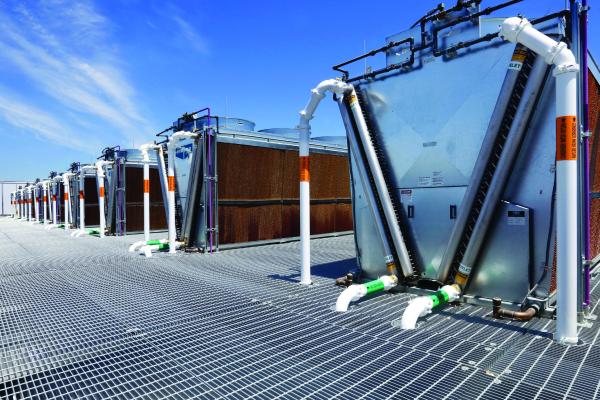Technology
This article will explore the Cooling Technologies Institute (CTI) Standard 201 (STD-201) Thermal Certification This article will explore the Cooling Technology Institute (CTI) Standard 201 (STD-201) Thermal Certification Program, share perspective from leading cooling tower manufacturers, and cover other existing and evolving CTI test codes, standards and certifications. This article will also emphasize the investment and bandwidth contributed to CTI by cooling tower manufacturers for the benefit of the industry and its end users.
Xcel Energy is headquartered in Minneapolis, Minnesota, and is the largest electrical energy provider in Colorado. The company recently upgraded its refrigerant monitoring systems at its Chilled Water building in downtown Denver, creating an efficient and reliable method for continuous monitoring of refrigerant used in 16 chillers in different locations – while supporting the need for safety, system performance, and reductions in energy and refrigerant costs.
[ Read Full Story ]
For decades, evaporative cooling has been the principal means to regulate the temperature of buildings. And with more than 50% of total building water usage dedicated to heat transfer, there are major opportunities for water savings.
[ Read Full Story ]
Cooling towers can use several power transmission technologies, including a gear drive, belt drive, direct drive, and electronically commutated (EC) drive. Each has advantages and disadvantages. The proper selection strikes an appropriate balance of initial cost versus operating costs.
[ Read Full Story ]
Cooling large buildings typically requires the use of air- or water-cooled chillers that produce chilled water, which then cools the air. About 39% of buildings over 100,000 square feet use chilled-water systems employing various refrigeration compressor designs.
[ Read Full Story ]
How often do you think about your cooling tower or the fill that provides the cooling engine for your process? Unfortunately, if you’re like many plant operators, your cooling tower is but one piece of equipment in your large facility, and its ranking on your priority list is probably lower than many other expensive and more intricate pieces of equipment in your plant.
[ Read Full Story ]
Snail mail. Rolodexes. Boomboxes. We’ve given up the familiarity of the past for the promise of the future. But is the same happening in the chiller industry? Is the push for lower global warming potential (GWP) refrigerants changing the industry as we know it? In some ways, yes. But, in the United States in particular, the change may be more gradual than it appears at first glance.
[ Read Full Story ]
Cooling tower customers want product innovations that can give them a greater amount of cooling for the energy used. In this age of shrinking operational budgets, they also seek ways to reduce installation and maintenance costs. These customer needs cut across industry lines, whether for light industrial or heating, ventilation and air conditioning (HVAC) applications, or for power and process cooling operations.
[ Read Full Story ]
Commercial buildings in the United States will be looking to replace centrifugal chillers as many are near or past their median replacement life of 25 years. This becomes apparent when you consider nearly half of all commercial buildings were constructed before 1980 according to data from the U.S. Energy Information Administration. The same can be said of buildings on American college campuses, which according to the same data, more than half of which were built before 1990. Bottom line — if you’re a commercial building owner or a facility manager/director in the United States, you may need to replace a chiller.
[ Read Full Story ]
Cooling towers may contain a variety of combustible material, including polyvinyl chloride (PVC) fill, fiberglass reinforced polyester (FRP) casing, fan stacks, fan decks, fan blades, and acrylonitrile butadiene styrene (ABS) and polypropylene nozzles, as well as wood and fiberglass structural components. Functioning cooling towers may also contain dry areas that could catch on fire when water flow is temporarily suspended during maintenance, or repairs involving electrical work or welding. In addition, fire damage in cooling towers can extend to the tower’s adjacent cells and to nearby buildings or equipment.
[ Read Full Story ]
This article contains pieces from an audit report developed for a fish processing plant located in Yangon, Myanmar. It is located in the Thinbawgin Ward of Dawbon Township in Yangon, Myanmar. The objective is to show factories the information they may want to have gathered on their refrigeration systems and supporting cooling systems.
[ Read Full Story ]

